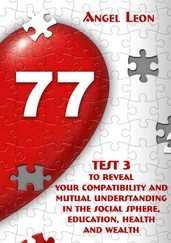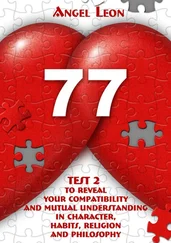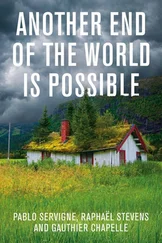Before Kropotkin, the philosophers of Antiquity did not fail to realize the importance of mutual aid in animals. But the philosopher from whom Kropotkin drew most inspiration was Alfred Victor Espinas (1844–1922), one of the precursors of ethology and sociology. For Espinas, the study of animal societies should form the first chapter of any sociology; in 1878 he wrote Les Sociétés animales ( On Animal Societies ), in which he showed that ‘unions’ are omnipresent in the animal world, in three forms: accidental societies (between dissimilar beings), normal societies (between animals of the same species) and conjugal societies (families, whose aim is reproduction).
In 1902, twenty-four years after the publication of Espinas’s book, Kropotkin published Mutual Aid . In addition to presenting the latest discoveries, he placed human beings in a continuum with animals, thanks to his readings in ethnology. Even more original was the way he set mutual aid both animal and human within the framework of natural selection. Above all, Kropotkin was the first to bring out the fundamental role of environmental conditions in the evolution of mutual aid: in a hostile climate (cold, drought, etc.), mutual aid is a significant advantage in terms of survival.
It is interesting to note that Darwin carried out his observations mainly in the tropics, an environment of relative abundance and thermal comfort compared to Kropotkin’s Siberia. In a tropical environment, species grow much faster, saturating ecological niches (how many species of trees, insects or mammals are there on one hectare of tropical forest?) and thus revealing much more territorial and reproductive competition than in desert or icy environments. In the latter, there is much less abundance, and conditions are harsh. Those who do not help each other die: it’s as simple as that.
A second reason why Kropotkin found it easier to observe mutual aid than Darwin did probably derived from his culture. Educated in the humanist values of the Enlightenment, he then travelled extensively in Western Europe in contact with the working class, which was developing a culture of solidarity and association. In addition, Kropotkin, who had readers in the Western world (he was published in English and French), had a dual scientific culture: he had also been trained in the Russian school of zoology, represented by Karl Fedorovich Kessler (1815–81), who shared Darwin’s ideas of evolution and selection, but not his Malthusian worldview.
The scientific community, gradually won over to the West’s competitive representation of the world, 64forgot Kropotkin. His ‘biased’ view of a cooperative nature did not mesh with that of modern evolutionary biology, predominantly English-speaking, imbued with anti-communism, and working more and more on genes and individuals (selfish, of course). 65Few have tried to rescue Kropotkin from limbo. But it is worth remembering a work published in 1988 by the brilliant palaeontologist Stephen Jay Gould. 66Today, the few scientists who cite Kropotkin do so with a mixture of embarrassment, condescension and fascination: his book is remarkable but uncritical, 67it is ‘wonderfully well written’, but ‘Kropotkin tells of seeing animal cooperation (that is, mutual aid) at every turn’; 68it’s a fascinating book, challenging as it does the predominance of the ‘struggle for life’ paradigm, 69presenting ‘an unapologetically positivist and biased view of the natural world’. 70
However, even taken with a grain of salt, the book is consistently cited as announcing two major historic milestones: the break with an ultra-competitive vision of the living world, and the break with an ‘ultra-genetic’ vision of evolutionary processes.
The life, death and rebirth of sociobiology, 1970–2000
In the mid-1970s, Edward O. Wilson, a brilliant professor at Harvard University specializing in social insects, in particular ants, created a new scientific discipline: sociobiology. 71He proposed to synthesize everything that is known about animal societies using methods derived from ethology, genetics and the science of evolution. In his book Sociobiology: The New Synthesis , published in 1975, he created an impressive compilation of the latest experimental knowledge on the subject, 72but also cemented his point with a simple mathematical equation borrowed from a young British student, William Hamilton, that supposedly explained the evolution of all social behaviour. A bold move!
Hamilton’s equation refers to genetics and describes a very simple idea: an individual has genes in common with its fellows (especially its family); so, by helping one of its relatives (i.e. to survive and reproduce), it participates indirectly in the transmission of a proportion of its own genes . In other words, I have more interest in sacrificing myself for my brother (who has many of my genes) than in sacrificing myself for a complete stranger. So, according to the theory, 73‘altruistic genes’ spread via mutual aid among relatives.
Also in 1975, a book appeared which represented a landmark in the history of biology: Richard Dawkins’ The Selfish Gene . Drawing on some very effective metaphors, it postulates that organisms are in fact only ‘robots’ manipulated by their genes, whose only goal is to perpetuate themselves. In other words, the basis of life is competition between genes and between individuals. According to this very mechanistic view, altruism and mutual aid are therefore nothing other than forms of behaviour that manipulate our genes to improve their reproductive success. Everything must be explained by our genes. This was the start of four decades of the hegemony of what one might call genetic sociobiology. 74
In the following years, generations of sociobiologists therefore endeavoured to highlight genetic correlations between organisms that cooperated. The prediction was that the closer individuals were genetically, the more they would help each other. In the initial euphoria, believing that there was a universal equation (one that was diabolically simple, and therefore beautiful), many researchers pulled the argument even further, and used it to explain altruistic human behaviour by genetic proximity. Wilson was the first, in the famous chapter 23 of his Sociobiology – the one devoted to humans – to suggest that human altruistic behaviour could be explained by the fact that apparently altruistic individuals are in reality simply helping their loved ones to reproduce more easily. This was not just a misleadingly simplistic and deterministic vision; above all, it was devoid of any experimental proof.
The argument also pulled some people in another direction: they emphasized the ‘natural’ preference for one’s family and race. Sociobiological theory gave grist to the mill of those who thought that altruism must be correlated with genetic proximity. This encouraged certain ideologues, grouped under the label of the ‘New Right’, to justify racism. On the opposite side of the political spectrum, the left, the critiques were of course vociferous, in particular on the part of the social sciences, but also in Marxist circles, which had always had a horror of biological determinism.
With regard to human beings, sociobiological hypotheses have not been supported by the facts. Hamilton’s little equation was a great machine for telling stories about genetics, a branch of biology which had the wind in its sails at the time and did not hide its desire to lord it over the other branches. 75Finally, this theory was part of a very utilitarian worldview, based on individualism, competition and selfishness, and probably owing its birth in part to the context of the Cold War.
Читать дальше












